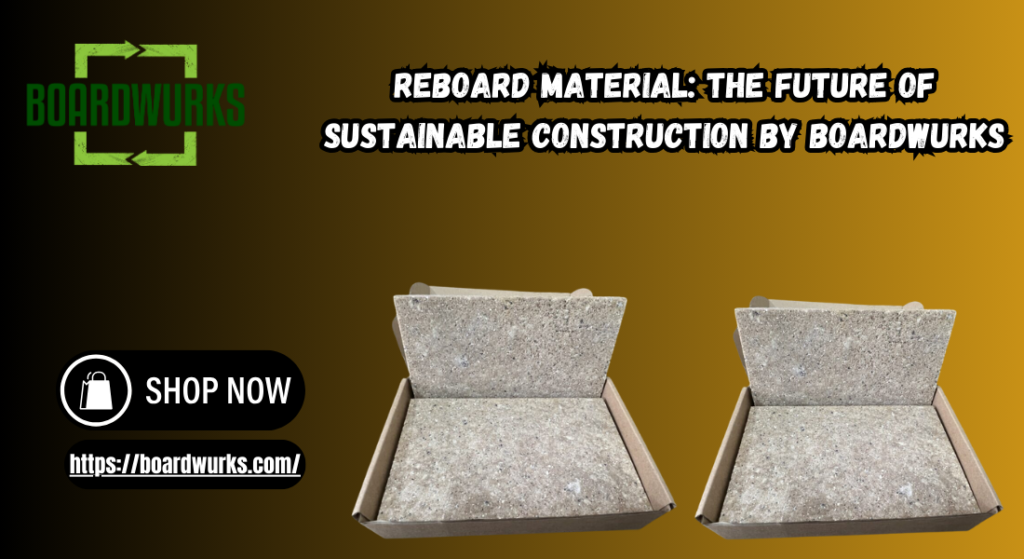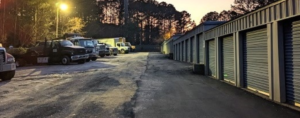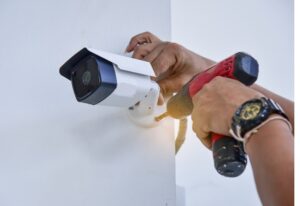
Reboard Material
In today’s world, where environmental concerns shape our choices, the demand for sustainable building materials has skyrocketed. Reboard material by Boardwurks is paving the way for a greener future in construction. As a revolutionary carbon-smart building material, Reboard is not only eco-friendly but also designed to meet the rising need for sustainable construction across various industries. This blog will explore the unique features and benefits of Reboard material, highlighting why it is the ideal choice for environmentally-conscious builders and businesses.
What is Reboard?
Reboard is an engineered panel made primarily from waste fiberglass laminate (FRP), sourced from discarded boat manufacturing processes or decommissioned wind blades from wind farms. This innovative production process addresses two critical issues: reducing waste and repurposing materials that would otherwise contribute to landfills or environmental degradation. By opting for Reboard, you’re not just choosing a product; you’re actively participating in the movement toward sustainability.
If you’re interested in exploring more, you can request a Reboard Sample Box from Boardwurks to evaluate this sustainable material firsthand.
Sustainable Composition and Recycling Benefits
What truly sets Reboard material apart is its exceptional commitment to sustainability. The panel is composed of 95% recycled content and utilizes a non-formaldehyde binding agent, making it an environmentally friendly and non-toxic choice. This construction significantly reduces the carbon footprint of any project, aligning perfectly with global sustainability initiatives.
Moreover, Reboard is fully recyclable, promoting a circular economy where materials are reused rather than discarded. This feature is particularly appealing to businesses and builders aiming to meet eco-friendly standards. By incorporating Reboard into your projects, you can significantly contribute to sustainability efforts while ensuring a safe and healthy environment.
Cost-Effective Solution for Multiple Industries
The Marine and Building Materials industries are continually searching for cost-effective alternatives to traditional materials. Reboard material offers an economical solution without compromising on performance. Its lightweight nature, combined with its structural integrity, ensures that it can handle rigorous applications across various sectors, from marine construction to residential and commercial developments.
When compared to other medium- and high-density panels, Reboard panels from Boardwurks provide a durable and cost-effective solution. This makes them an excellent choice for projects where budget constraints and sustainability goals must coexist.
Key Features of Reboard Material
- 95% Recycled Content: Committed to sustainability, Reboard is primarily made from repurposed materials.
- Made from Waste Fiberglass Laminate (FRP): Sourced from boat manufacturing and wind blades, reducing landfill waste.
- Non-formaldehyde Binding Agent: Safer and more eco-friendly for construction projects.
- Fully Recyclable: Supports a closed-loop system and circular economy.
- Cost-Effective Alternative: Provides excellent value compared to traditional medium- and high-density panels.
Additional Information
- Weight: 2 lbs
- Dimensions: 9 × 6 × 2 in
Why Choose Reboard?
Opting for Reboard by Boardwurks is a commitment to a sustainable future. This innovative material minimizes waste while providing a reliable and efficient alternative to conventional building materials. If you’re looking to reduce your project’s environmental impact or seeking a durable and cost-effective solution, Reboard panels tick all the boxes.
By choosing Reboard, you’re not only investing in a superior product but also supporting a vision for sustainable development that aligns with your values.
Frequently Asked Questions (FAQs)
1. What is Reboard made of?
Reboard is primarily made from waste fiberglass laminate (FRP), sourced from discarded boat manufacturing processes and decommissioned wind blades.
2. How does Reboard contribute to sustainability?
Reboard contains 95% recycled content, uses a non-formaldehyde binding agent, and is fully recyclable, making it an eco-friendly choice for construction.
3. What industries can benefit from Reboard?
Reboard is ideal for various industries, including marine construction, residential projects, and commercial developments.
4. Is Reboard safe to use?
Yes, Reboard is non-toxic and made with a non-formaldehyde binding agent, ensuring a safer environment for construction and use.
5. How can I request a sample of Reboard?
You can request a Reboard Sample from Boardwurks to evaluate the material firsthand.
6. Why is Reboard cost-effective?
Reboard’s lightweight nature and structural integrity provide a durable alternative to traditional medium- and high-density panels, making it a cost-effective choice for builders.
7. Can Reboard be recycled?
Yes, Reboard is fully recyclable, supporting a closed-loop system and contributing to a circular economy.
Conclusion
In an era focused on sustainability, Reboard material by Boardwurks emerges as a leader in eco-friendly construction solutions. By using Reboard, you contribute to reducing waste, lowering carbon footprints, and promoting a healthier planet for future generations. Whether you’re in the marine industry or involved in building construction, choosing Reboard means investing in a sustainable, cost-effective, and durable material that meets the demands of modern construction.
Product Tags:
reboard material, reboard, material reboard, reboarded, reboarding, material the reboard





